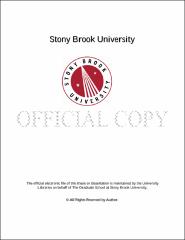| dcterms.abstract | This thesis describes implications of inference logic and information theory on non-equilibrium physics. Inference logic prescribes a unique way of converting information about mean-values into probability assignments, which are applied to the physics of non-equilibrium systems. This thesis is structured in four chapters: First, the central theorems of information theory are derived from the basic requirements of any inference procedure. The theory, formulated to apply to physical equilibrium systems with mean-value constraints, is called Maximum Entropy (MaxEnt). This idea bridges the work of Shannon and Boltzmann and sets difficult concepts from statistical physics, such as ergodicity and metric transitivity, into a new context. Second, MaxEnt is extended to general time-dependent systems, giving a concept named Maximum Caliber (MaxCal). In particular, we develop a theoretical description of steady-state systems in the limit of small driving forces. We recover two important results from linear thermodynamics, namely Onsager's reciprocal relations and Prigogine's theorem. This result is important as it does not rely on the problematic assumption of local equilibrium. Furthermore, higher-order symmetries are revealed, leading to predictions beyond the linear regime. We show that the same expansion results in corrections to Prigogine's theorem. Both effects are exemplified in a toy model. In this example, we find bifurcations which suggest a spontaneous change in behavior as the system leaves the near-equilibrium regime. These ``phase transitions'' are reminiscent of physical effects, such as the transition from conductive to convective heat transfer in viscous fluids. Third, we review the idea and application of Maximum Entropy Production (Max-EP), a theory supposed to explain large-scale organization for complex systems far from equilibrium. We present the theory's success in climate prediction, commenting on the underlying assumptions and problems in the application. Next, we discuss Dewar's hypothesis that MaxEnt and Max-EP could be equivalent. A detailed analysis of Dewar's attempts at proving his conjecture shows the connections to be evasive. We conclude that Max-EP is loaded with ambiguity and that a convincing derivation from inference science has not yet been brought forward. Fourth, we move beyond the assumption of a steady state in considering a diffusion system, which is arbitrarily far from equilibrium. We simulate the diffusion system (in one dimension) and produce statistical distributions over possible outcomes. Aiming at reproduction of the simulated results, we develop a coarse-grained mathematical model, which can be analyzed using MaxCal. We exploit symmetries to find a computationally efficient representation in terms of a transfer matrix. Our MaxCal analysis reveals a physical constraint which was previously unconsidered. After the implementation of this constraint, MaxCal predicts the simulated distributions at good accuracy. We conclude this chapter by pointing out how MaxCal provides a unique means of including new physical effects. In summary, the results of this thesis demonstrate the ideas of inference logic to be very useful in physics. Especially our findings about linear thermodynamic steady states pose a novel approach to traditional thermodynamic theorems. While neither MaxEnt nor MaxCal has, by itself, any physical content, they can be used to great effect for the analysis of physical observations as well as in model building. In this sense, MaxEnt and MaxCal provide a rigorous theoretical framework of converting observations into probability assignments and show a remarkable potential for the approach to fundamental questions in statistical physics from an inference perspective. | |

